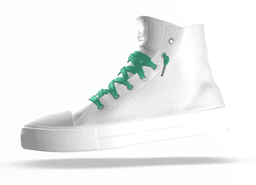Exclusive Comparison: Quill vs Tilt Brush – Who Wins?
Quill shines for complex, storyboard-driven VR art with unique frame-by-frame workflow, thriving on its narrative emphasis and intuitive hand-drawn animations, while Tilt Brush excels as an immersive 3D painting tool, providing an intuitive interface, variegated material choices and strong community support, making it ideal for real-time, spontaneous art making.

Key Differences Between Quill and Tilt Brush
- Quill focuses on frame-by-frame animation, Tilt Brush offers real-time 3D painting.
- Quill boasts narrative-driven approach, Tilt Brush enables exploration of form and color.
- Quill requires Oculus Rift or HTC Vive, Tilt Brush also works on Vive and Quest.
- While both have export capabilities, Tilt Brush supports a wider range of file types.
- Quill is maintained by Facebook, Tilt Brush is now open-source under the “Open Brush” project.
| Comparison | Quill VR | Tilt Brush |
|---|---|---|
| Developer | Skillman & Hackett, acquired by Google | |
| Application | 3D art creation in VR | 3D painting in VR |
| VR Device Compatibility | Oculus Rift, HTC Vive | HTC Vive, Oculus Rift |
| Major Features | Animation, modelling, lighting, shared spaces | 3D drawing, animations, snapshots, videos, multiplayer painting support |
| Export Formats | Alembic | .gltf, .fbx, .obj, .usd, .wrl, .stl, .json |
| Style | Stop-motion animation, 3D sculpting | 3D painting, multiuser painting experiences |
| Integration | Unity through poly toolkit, Oculus Medium | Open Brush (open-source), Multibrush on Oculus Quest (paid) |
| Unique Offerings | Animation without rigging, oil/watercolor painting effects | 3D painting using unique materials like fire, stars, snowflakes |
| Latest Update | Quill 2.0 enhancing animation abilities | Turned open-source as Open Brush |
| Proposed Future Development | Enhancements for communal art experience | Continued community-led development |
What Is Quill VR and Who’s It For?
Shaped by the tech giant, Facebook, Quill VR is a majestically-conceived tool for use with Oculus Rift and HTC Vive. Offering toolsets for modeling, animation, and lighting within VR, it serves as a canvas for creating 3D art in virtual spaces for an unparalleled VR experience. More than a tool, Quill VR, as evidenced by artist Goro Fujita’s animated short film, acts as a catalyst for artistic visions within the boundless virtual ether.
Quill VR shirks the need for complex modeling, texturing, or UV unwrapping, leaning instead towards a stop-motion animation style. Furnishing its users with a timeline toolset for animations and the ability to visualize previous and next animation frames, the software is primarily deployed for creative endeavors, perfect for artists and designers to express time and space in vibrant 3D narratives.

Pros of Quill VR
- Highly intuitive and user-friendly interface
- Real-time 3D art creation
- Impressive timeline toolset for animations
- Ability to share visuals in Facebook Spaces
- Provides oil-painting and watercolor effects in VR
Cons of Quill VR
- Limited to Oculus Rift and HTC Vive users
- Lack of complex modeling and texturing
- leans more towards stop-motion animation style that might not be preferred by all
What Is Tilt Brush and Who’s It For?
A brainchild of Google, Tilt Brush is a cutting-edge 3D painting VR application that has redefined the artistry in Virtual Reality. Born in the labs of Skillman & Hackett and triumphantly labeled as HTC Vive’s “killer app,” Tilt Brush reigns as the Proto Award laureate for the “Best GUI”. Primarily designed for use with 6DoF motion interfaces, it offers a revolutionary palette and virtual environment, inviting every artist to paint in 3D.
From its humble beginnings as a chess game prototype to achieving acclamation for its 3D painting capabilities, Tilt Brush has evolved into an intuitive and creative playground. It has perennially stoked the creative flames with its unique VR painting materials like fire, stars or snowflakes, and casts a wide net to sate the creative thirst of animators and artists alike, exploring the realms of solitary creation or multiplayer adventures.

Pros of Tilt Brush
- Award-winning, intuitive user interface
- Diverse export formats
- Unique VR painting materials
- Supports multiplayer painting
- Source code available on GitHub
Cons of Tilt Brush
- Room-scale 3D painting might be overwhelming for some users
- Steam site license necessary for commercial use
- No hardware that offers optimal experience outside of HTC Vive
The Verdict: Quill vs. Tilt Brush – Which Reigns Supreme?
For AR/VR creators and tech enthusiasts, the choice between Quill and Tilt Brush may be complex, yet it becomes simpler when considering your unique needs and creative preferences.
3D Animators and VR Filmmakers
For these creators, the Quill advantage lies in its storytelling emphasis. Offering object-based animation without need for rigging, it leans more towards stop-motion animation style. Additionally, Quill’s Visuals add depth to social VR experiences, having practical applications in professional 3D pipelines due to granular control over strokes and rendering outputs.

Artists and Sculptors
For budding sculptors and artists, Quill is positioned as the quintessential VR sculpting tool. Facilitating translation of 2D concepts into 3D space, it hands the brush to the artist where Tilt Brush offers room-scale 3D painting, invoking a feeling of painting in open space.

Community Developers and Collaborators
For those with a community-focused mindset, Tilt Brush shines. With the new open-source version, Open Brush, ample room is available for experimentation and collaboration. Further, tools like Multibrush help fuel community-led development, creating a social painting experience.

In the VR War between Quill and Tilt Brush, your needs dictate the victor. For detailed animation and intricate storytelling, Quill dominates; while for an immersive painting experience and community development, Tilt Brush conquers.







